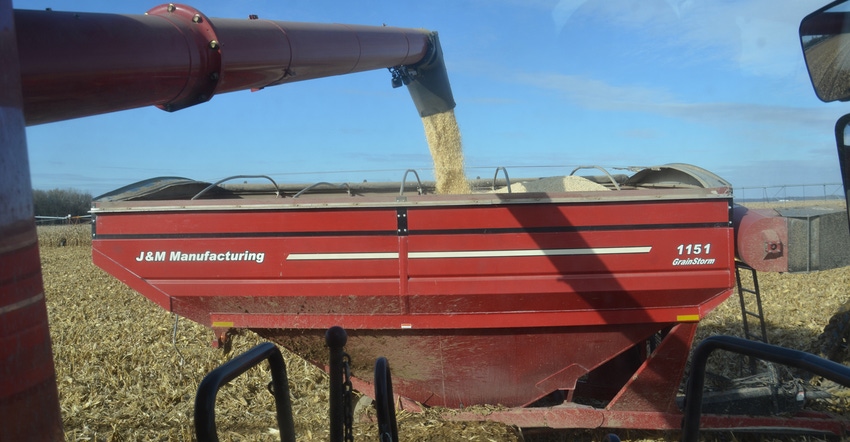September 29, 2020

Despite foliar fungicide applications, we’ve seen lots of disease pressure during 2020. Gray leaf spot is most virulent, along with some lesions of northern corn leaf blight and southern corn leaf blight. There are also reports of southern rust in some fields. If fungicides weren’t used and conditions were right, these diseases could contribute to premature death of plants.
In addition, some fields have been hit by anthracnose stalk rot. We’ve also seen diplodia and gibberella ear and stalk rots. These pathogens affect both yield and test weight.
Growers often discuss the moisture and test weight of the grain they’re harvesting, especially if moisture is low and test weight is high. Grain moisture is important because of drying costs, but why is test weight important? Here is a refresher on how test weight is computed, what impacts it and why it matters:
Test weight defined. Test weight is a ratio between weight and volume. It’s measured as weight of grain that fills a quart container. There are 32 quarts in a bushel basket. Corn grain is marketed in the U.S. on the basis of 56 pounds test weight per bushel. Corn with 56 pounds per bushel is considered No. 1 yellow corn. If the test weight is 54 pounds per bushel, it’s No. 2 yellow corn. Grain with lower than 56 pounds test weight may be discounted by elevators, but no credit is given for higher test weight.
Benefits of higher test weight. Along with bragging rights, growers can haul more bushels of high test-weight grain per trip to the elevator than low test-weight grain. Grain with higher test weight generally has better quality. Higher test-weight grain with orange color has greater eye appeal. It generally ships better and is preferred by foreign buyers compared to lower test-weight, chaffy corn.
Genetics. Hybrid genetics play an important role in test weight. Planting hybrids with genetic potential for higher test weight improves chances of harvesting corn with high test weight as long as it reaches full maturity.
Yield. There is no correlation between test weight and yield potential of a hybrid. You can find high-yielding hybrids with average test weight, and average-yielding hybrids that tend to produce higher test weights. Remember, you don’t get a bonus for test weights above 56 pounds.
Moisture content. As grain moisture decreases, test weight increases. Dry matter weighs more than water. Drier grain shrinks and produces higher test weight because you can pack more dry kernels into a bushel basket.
Early planting. Our studies for several years have indicated that corn planted before May 10 in the central Corn Belt will have 1 to 1.5 pounds higher test weight than corn planted in late May or June.
Weather. Higher temperatures with ample moisture tend to increase test weight in mature corn. However, drought stress decreases test weight. It affects photosynthesis.
Diseases. Late-season leaf diseases such as southern corn leaf blight and common or southern rust decrease test weight if not controlled by fungicides. Left unchecked, they can interrupt proper kernel development. Ear rots such as diplodia, giberrella or aspergillus will also have a negative effect on test weight.
Nanda is director of genetics for Seed Genetics Direct, Jeffersonville, Ohio. Email [email protected] or call 317-910-9876.
About the Author(s)
You May Also Like






